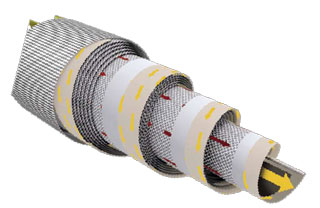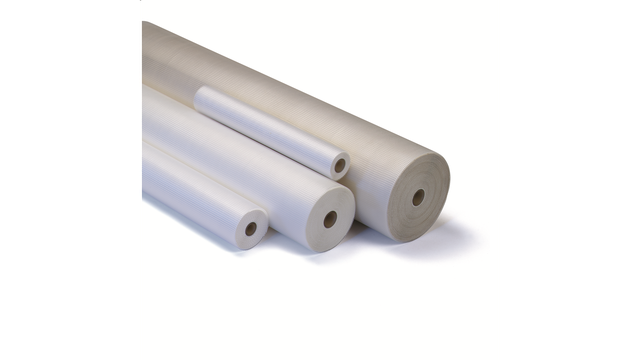Espiral MF
The microfiltration spiral membranes from Alfa Laval are based on a unique construction of polypropylene support material in a sanitary full-fit design that provides optimum cleaning conditions. The spiral membranes are available with different microfiltration membrane types and in different combinations of length, diameter and feed spacer size
Alfa Laval microfiltration (MF) spiral membranes are extremely cost-effective to operate, largely as the result of the low energy consumption involved. They also have the advantage of eliminating the frequent replacement and disposal of the cartridges and other consumables used in traditional dead-end filtration.
Alfa Laval microfiltration spiral membranes are extremely durable, with service lives that can extend over more than five years.
Microfiltration is used on feed streams where the aim is to remove small-diameter dispersed solids such as bacteria, fat and oil globules without affecting the balance of the components dissolved within the stream.
Alfa Laval offers two series of microfiltration spiral membranes with different pore sizes and flux properties. The membrane materials are either polysulphone polymer or fluoro polymer based on polypropylene support material.
MFG series
The MFG microfiltration spiral membrane is made of polysulphone polymer. The spiral membrane is avaiable in the types MFG1 and MFG2 with pore sizes of 0.1 µm and 0.2 µm respectively.
MFP series
The MFP microfiltration spiral membrane is made of fluoro polymer. This spiral membrane is available in type MFP2 having a pore size of 0.2 µm and MFP5 and MFP8 with pore sizes of 0.5 µm and 0.8 µm respectively.
Benefits
- cost-effective operation due to low energy consumption
- long life time compared to traditional dead-end filtration
- cover a broad spectrum of flux properties and pore sizes
- available in different combinations of length, diameter and spacer size
- sanitary design with all materials in compliance with EU Regulation (EC) 1935/2004, EU Regulation 10/2011 and FDA regulations (CFR) Title 21
- same membrane types available as both flat sheet membranes and spiral membranes
- suitable for extensive range of processes
- manufactured by Alfa Laval's own membrane centre
Cómo funciona
La tecnología básica tras filtración por membrana implica el uso de una membrana semipermeable para separar un líquido en dos corrientes distintas.
El bombeo de este líquido a través de la superficie de la membrana crea una presión transmembrana positiva que permite el paso de cualquier componente más pequeño que la porosidad de la membrana, formando el permeado.
Cualquier componente más grande que el tamaño del poro no puede pasar y queda atrás en lo que llamamos retenido. La superficie de la membrana se mantiene libre de bloqueos por la fuerza del flujo de líquido que se mueve en paralelo a la superficie de la membrana.
Una membrana en espiral se compone de una serie de «sobres» de membrana con 2 láminas de membrana separadas por una malla espaciadora de permeado, cada una pegada a un tubo central de recolección de permeado.

Entre cada par de envolturas hay un separador que crea el canal de alimentación, permitiendo que la alimentación fluya a lo largo de la membrana en espiral, mientras que el permeado que pasa a través de la membrana hacia la envoltura de la membrana fluye en un patrón en espiral hacia el tubo de recolección de permeado.
Rojo = Alimento/retenido.
Amarillo = Permeado.

